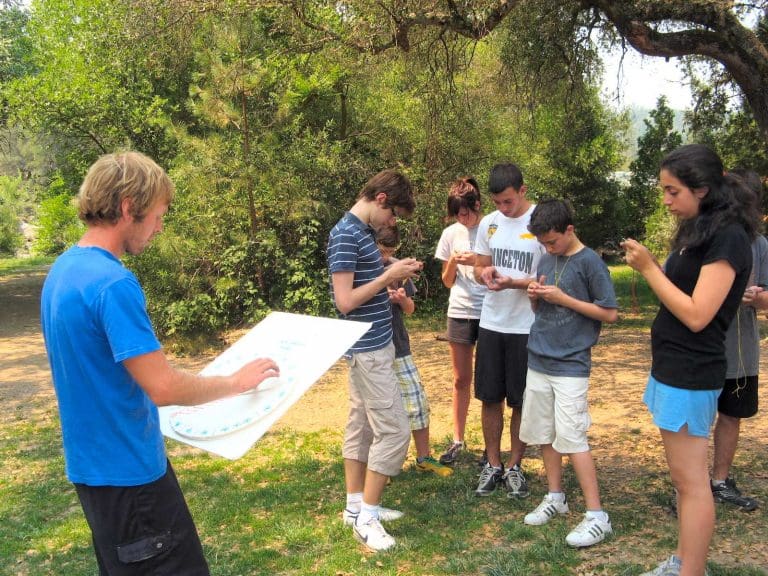For the 2008 season we are pleased to announce dramatic progress toward meeting the goals of our Greenhouse Action Plan. Our “Eco-Bus” is the first 100% waste vegetable oil (WVO) powered bus on the South Fork of the American River, will reduce carbon emissions profoundly each and every time it carries passengers down the highway. On the Chili Bar Run we will achieve up to an 80% reduction from our baseline carbon emissions.
Over a year ago we announced a first for the rafting industry, Mother Lode’s Greenhouse Gas Action Plan (GAP). In that plan we committed to reduce our overall carbon emissions 20% by 2012, 40% by 2040 and 80% by 2050 with 2006 serving as our baseline. It was then, and remains now, a tall order, our new Eco-Bus is a giant step towards reaching our goal.

Vegetable oil represents one example of renewable solar energy converted by plants through photosynthesis into liquid form. Although there is little or no carbon savings using virgin vegetable oil due to the petrochemicals used to till, harvest, manufacture and transport it to the point of use, “waste” vegetable oil (WVO) is a different matter. By reclaiming WVO from restaurant garbage we are recycling and reusing a resource. Additionally, its usual manner of disposal produces more carbon emissions than our using it as fuel. An added bonus is the fact that vegetable oil produces fewer air pollutants than either petroleum diesel or gasoline. Remarkably, using WVO reduces air pollution and greenhouse gas emissions simultaneously!
Step 1: Collecting Vegetable Oil
To maximize the environmental benefit we get our waste vegetable oil locally to reduce the cost in carbon and our time.
Step 2: Returning to the Farm: Making Bio-Diesel
Dr. Diesel’s purpose in inventing the diesel engine in 1897 was to allow farmers to use 100% vegetable oil to run their farm machinery. Although we initially successfully made blended bio-diesel, we realized that to use vegetable oil to full advantage one needs to commit to using it 100% pure. Anything less dilutes its beneficial effects. Dr. Diesel, the “full veggie” please!

Step 3: Refining 100% WVO: Accept No Substitutes.
Our 100% WVO system includes two electrical heaters to thin the oil, three electrical pumps to move it, two steel barrels to contain it, an aluminum canister housing a bag style filter, and a centrifuge to extract the last bit of water. The system is permanently installed it in a retired bus, which also serves as our storage facility. We control the system through a breaker panel and 3 timers all connected to a RV style electrical hookup. This set-up is fully mobile and ready to visit the next World’s Fair.
Step 4: The Right Bus.
An unmodified diesel bus will not run on 100% WVO. A conversion must be performed, the expense of which can easily exceed the cost of the bus. The right bus is therefore mandatory. We shopped for over eight months to find ours, a supercharged and turbocharged 1987 Gillig Phantom with only 106,000 miles, a perfect body, and a silky smooth “air ride” suspension. Jim Stepp, our head driver, and I went to Los Angeles and outbid several disappointed fellows whose vision was to turn our bus into a mobile condo in Mexico. We christened her “Eco-Bus” and drove 400 miles north to Coloma. Thanks Ron and Jim! This fall the bus got a paint makeover in MaLode earth-tone tan and forest green and she looks great.
Step #5 A 100% WVO Conversion – Not for Amateurs.
Unlike a Mercedes or Volkswagen, “big rigs” are not easy to convert yourself. Each system is customized to the vehicle that uses it. As it turned out the two major U.S. vendors are both located east of the Rocky Mountains.
Fortunately we found a kind of “alternative energy mad scientist” quietly inventing sophisticated counter-current exchange, continuously heated, precision welded aluminum, 100% WVO systems that are efficient, reliable and operate well at all temperatures. Based upon what I knew about other systems, I was amazed to learn our bus would transition to WVO within two minutes or less of engine start-up, thus keeping our use of “Dino-diesel” to an absolute minimum.
Step #6 Fast Forward to the Year 2050
With the Eco-Bus up and running, it was time to find the way to use it most efficiently to reduce carbon emissions for the introduction of “Eco-Rafting”. The Chili Bar Run was the most energy efficient choice by far with an estimated carbon savings of 80% from our 2006 baseline! This means we can meet the 2050 goals of our GAP on the Chili Bar Run in 2008, approximately 42 years ahead of schedule!
Rest assured, the Eco-Bus project is only one aspect of Mother Lode’s overall effort to complete our GAP. Nevertheless, it is a very encouraging start and if you take a shower at our camp this season the hot water will come from a solar “box” heater, photovoltaic power is on its way, and many other changes are anticipated as elements of our evolving Sustainable Practices Institute- but that’s another story.
We look forward to seeing you on the river.
Scott Underwood and the MaLode Extreme Green Team
Aaron, Allen, Ron, Jim, Richard, Greg, Rich, the Mystery Painters, and Charlie the River Dog











